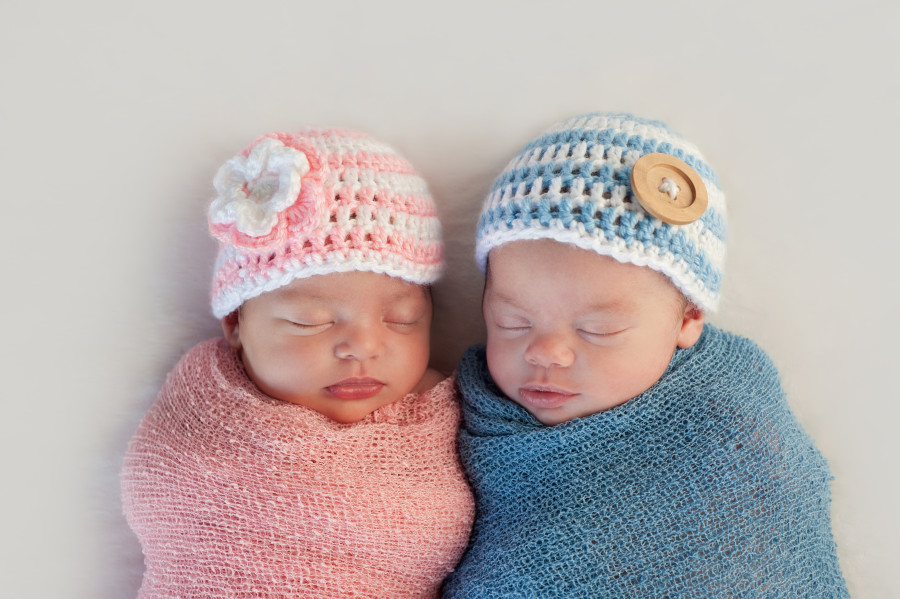There are identical twins, where a fertilized egg splits into two to give you two people with identical DNA. Then there are fraternal twins, where two separate eggs are fertilized and develop in the uterus at the same time.
And that is all you need to know about twins, right? Wrong!
There are a few other permutations and things to know about how two babies end up sharing the same uterus at the same time. Most of these situations are very, very rare, but they are fascinating.
Some researchers say that as many as one in eight human pregnancies involve more than one fetus. One fetus (or more) fails to develop and the pregnancy ends with one baby. In some cases, the other fetus is seen on early ultrasound exams, but then is no longer seen, which is called vanishing twin syndrome.
In some of cases of twin embryos, they apparently fuse and the result is one generally healthy person who has cells with two different sets of DNA throughout his or her body. This condition, called chimerism, was thought to be supremely rare, but as more people have their DNA tested, this condition is being discovered more frequently.
Fraternal twins (also called dizygotic twins) are more common than identical twins. Fraternal twins can be a girl and a boy and because they start out as two separate eggs, fertilized by two separate sperm, they are no more alike than any other two full siblings.
However, fraternal twins can be half-siblings to each other. It is possible for a woman to become pregnant by two different men. This can happen if she has ovulated more than once in a given menstrual cycle, and also had sex with two different men within a few days, or if she has ovulated a month after becoming pregnant and has sex with a different man. The second fetus develops and is delivered along with his or her very slightly older sibling. (This is known as superfetation and can, of course, happen with the same father as well.) This difference in paternity is usually only detected if DNA testing is done or if the babies look very, very different from each other, such when one father is white and the other is black.
Identical twins (monozygotic twins) are always the same sex, right? Actually, it is possible for identical twins to be two different sexes. This can occur if the original fertilized egg has an extra chromosome and rather than being XY is XXY. When the split happens, one fetus gets XX and the other gets XY and different sexes result. But there have only been tiny number of cases of this happening.
And identical twins might end up not being so identical in other ways. Although they carry the same genes, different genes are activated as they develop in the uterus. The twins can turn out looking less identical than identical twins usually do. Also, identical twins always have different fingerprints because fingerprints are created during development in the uterus rather than because of genetics.
Twins may share the same placenta and amniotic sac, or may not. Fraternal twins will always get their own placentas and amniotic sacs, but identical twins may share them or may each get them. If identical twins share a placenta, one twin may get more nutrients and be noticeably bigger than the other.
Most twins are born within a few minutes of each other, but there have been cases where twins have been born several hours or even a day or more apart. Generally, if the second twin is delayed too long, obstetricians will deliver him or her by cesarean section.
And we will leave you with this riddle: Two women are sisters. They were born on the same day to the same mother, but they are not twins. How is that possible? Simple, there was another sister that was born at the same time, making the two women triplets, not twins.

